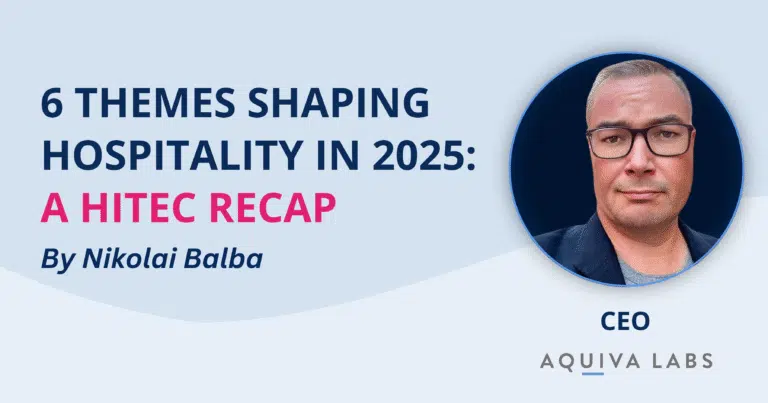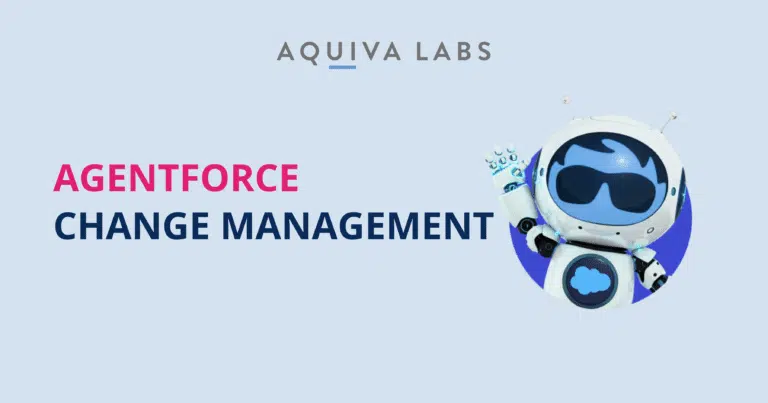London rarely hosts two Salesforce showcases in the same week, yet we recently saw the Agentforce World Tour and TrailblazerDX at ExCel in London. The message from the main stage was unequivocal. “This is the digital labour revolution,” declared Zahra Bahrololoumi, Salesforce’s UK & Ireland CEO, as she talked about Agentforce, the “agentic layer” designed to let enterprises “extend our teams and unlock additional capacity” with AI agents. Heathrow’s experience earned the biggest round of applause. Its Agentforce‑powered assistant, Hallie, now resolves nine in ten chats without human hand‑off, trims live‑chat sessions by half a minute and has lifted digital contact efficiency by forty per cent. Inside Salesforce, the same technology has fielded 850,000 support conversations, closed 85% of them unaided and carved roughly $50M out of the cost base while surfacing thirty thousand extra leads.
Salesforce framed these success stories as proof that digital labour is moving from slideware to the P&L. Hallie matters because she handles evergreen baggage enquiries at scale. Capita’s story, announced on the same stage, matters for a different reason: volume recruitment. With Agentforce, the outsourcer plans to screen ten thousand candidates a year, cutting a process that once dragged on for months to a handful of days. Thames Valley Police’s rebuilt victim portal showed similar economics (£1.4 million shaved off annual costs) and reminded the audience that public‑sector workflows, too, are eligible for agentic treatment.
At TDX, the developer keynote stressed that Agentforce is not another chatbot/co-pilot toolkit. It is an execution layer that can call Apex, invoke Flow, leverage third‑party APIs and work with both structured and unstructured data thanks to Data Cloud. It’s fully packagable now for AppExchange partners. One well‑governed agent can therefore appear on a website, WhatsApp thread or voice IVR without duplication. Revamped pricing, not just capability, is designed to push pilots into production.
Salesforce is betting that economics, not curiosity, will drive adoption. Its Digital Labour Trends Report finds that UK chief executives expect a 26% productivity lift and plan to redeploy nearly a quarter of their people. Meanwhile, 84% of senior leaders intend to fund AI training within the next year, spending roughly twelve per cent of payroll to do so. The idea is not to replace staff but to raise the floor of what routine work costs.
Ground Truth and Next Steps
Academic literature offers a cooler reading. In MIT’s “Beyond AI Exposure: Which Tasks Are Cost‑Effective to Automate?” Svanberg, Li, Fleming, Goehring and Thompson warn that only 23% of wages linked to technically automatable work are economical to automate at today’s prices. Cost curves, not model weights, remain the limiting factor. Hampole, Papanikolaou, Schmidt and Seegmiller from the National Bureau of Economic Research (NBER) deepen the analysis in “Artificial Intelligence and the Labor Market”, arguing that dispersion of task exposure within a job, not the job title, predicts whether employment grows or shrinks. If software eats every task in a role, displacement follows; where exposure is uneven, workers pivot to the residual tasks and headcount often rises.
Empirical data supports that nuance. Chen, Srinivasan and Zakerinia from Harvard Business School, in “Displacement or Complementarity? The Labour Market Impact of Generative AI”, track US vacancy data and find postings for automation‑prone occupations falling seventeen per cent per quarter while augmentation‑prone roles climb twenty‑two per cent. Forrester’s “2023 Generative AI Jobs Impact Forecast” puts potential US job losses at 2.4 million by 2030, yet estimates that eleven million positions will be remodelled rather than removed, reinforcing the picture of churn over collapse.
Corporate caution reflects that ambiguity. Klarna’s widely cited chatbot eliminated 700 support roles in 2023, only for the company to rehire humans and rethink the model two years later. “AI gives us speed. Talent gives us empathy,” admitted spokesperson Clare Nordstrom as the Swedish lender unveiled a hybrid desk. The lesson travels: AI absorption is not automatic; it demands a continuous fit between customer stakes, data fidelity and economic upside.
Operators, therefore, face three practical tests.
First, target rule‑bound tasks with hard‑coded guardrails. Heathrow succeeds because lost luggage queries follow a somewhat narrow script. Capita’s screening agent works because hiring funnels are (mostly) linear. When workflows sprawl, agent performance may slide and trust evaporates.
Second, invest in what Bahrololoumi calls a “skills inversion.” The Digital Labour survey suggests that 23% of UK workers will change roles outright. The same study shows that employees are already saving up to ten hours a week by handing over rote work to agents, equivalent to a full working day. Closing the capability gap means funded reskilling, not stapling an online course to an email.
Third, tie success to balance‑sheet metrics. Conversations handled are vanity until it shifts cost‑to‑serve, gross margin or revenue per agent (Check out our ROI calculator). Klarna’s reversal and Wells Fargo’s go‑slow stance prove that CFOs will yank the cord if promised economics fail to appear.
“At Aquiva, we believe Salesforce’s digital labour strategy isn’t just about automation; it’s also about augmenting human interaction,” says Jay Keating, Aquiva’s President & COO. “Agentic AI, powered by human insight, elevates every touchpoint, accelerating outcomes for customers while empowering teams to operate at their highest and best use.” Early agentic/LLM-related deployments, such as our internal one, confirm gains across functions, from engineering to revenue operations, reflecting positive results that can match, and often exceed, the benchmarks cited on stage in London.
Architecture often thwarts that progression. Legacy middleware, brittle integrations and sparse data models starve agents of context. Heathrow’s Hallie thrives because passenger and flight data sit in one lake. In hospitality, by contrast, 79% of brands say fragmented systems block AI roll‑outs and 69% blame integration.
This is the space Aquiva occupies. When working with customers, we fix the “plumbing” so a triggered action actually executes instead of bouncing between silos. We pair product engineers who understand Salesforce pro-code with AI specialists who understand how LLMs work. That cross‑disciplinary stance matters because agentic workloads do not respect org charts. They traverse sales, service, marketing and analytics in a single call stack.
Our methodology is pragmatic. We start with a use case that owns a budget line, e.g. folio retrieval in hotels, missed‑bag refunds in travel, and first‑notice‑of‑loss in insurance. We pilot in weeks, instrument value and scale only when metrics clear the hurdle. Our Agentforce starter package lands in four weeks and has delivered eight projects to date.
Where does this leave leaders after London? Digital labour is neither hype nor panacea. It is elastic capacity that rewards firms with clean data, clear workflows and disciplined change management. The six‑trillion‑dollar upside Bahrololoumi cites will not accrue through chat volume; it will accrue where agentic actions hit revenue and cost levers that boards already track. Heathrow, Capita and Thames Valley Police hint at that trajectory. Thompson, Hampole and Chen remind us it will be uneven and, for many roles, upside‑down.
The revolution has begun, but it will advance the way meaningful change always does: task by task, process by process, measured in pounds on the ledger rather than decibels from the stage.
If you’re exploring how to turn agentic AI from theory into measurable results, let’s talk.
Author

Greg Wasowski
SVP, Consulting and Strategy




